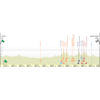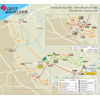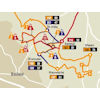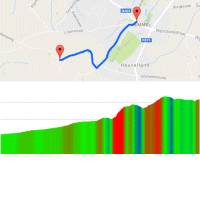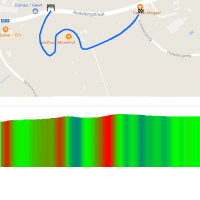For over a decade Ghen did not see the start of Gent-Wevelgem. The race sets off from Ypres and the riders traverse the flat fields of Flanders in the first half of the race.
The real action begins when the race enters the hilly zone aafter almost 150 kilometres. The Scherpenberg, Vidaigneberg, Baneberg, Monteberg and Kemmelberg follow in quick succession before the riders continue on a Flemish take to Strade Bianche. Three sections of so-called plugstreets – or unpaved roads – are tackled within 5 kilometres.
Some 10 kilometres after the last plugstreet the combo Monteberg/Kemmelberg returns and with 45 kilometres out the riders are back where the climbing started. They tackle the Scherpenberg, Vidaigneberg, Baneberg and Kemmelberg within 11 kilometres. The last ascent is particularly intimidating as the final haul up is taken from the western side, meaning cobbles and a steepest sector of 23%.
The remaining 34 kilometres are played out on straight and exposed roads. There is one change of direction when the route moves through Ypres again to leave the place via the renowned Menin Gate Memorial. Chasers will have a perfect target if there are any attackers up the road.
Last year, an elite group with Alberto Bettiol, Kasper Asgreen, Matteo Trentin, Wout van Aert, Mathier van der Poel, Stefan Küng, Yves Lampaert, John Degenkolb, Mads Pedersen, and Florian Sénéchal were left at the front on the straight road between Ypres and Welvelgem. Following several attacks in the finale the decisive move was made by Trentin. The Italian attacked just before the flamme rouge with Bettiol and Sénechal in his wheel. Pedersen bridged across and powered to the win.
Other interesting reads: results and start list 2021 Gent-Wevelgem.
Gent – Wevelgem 2021: route, profiles, more
Click on the images to zoom
